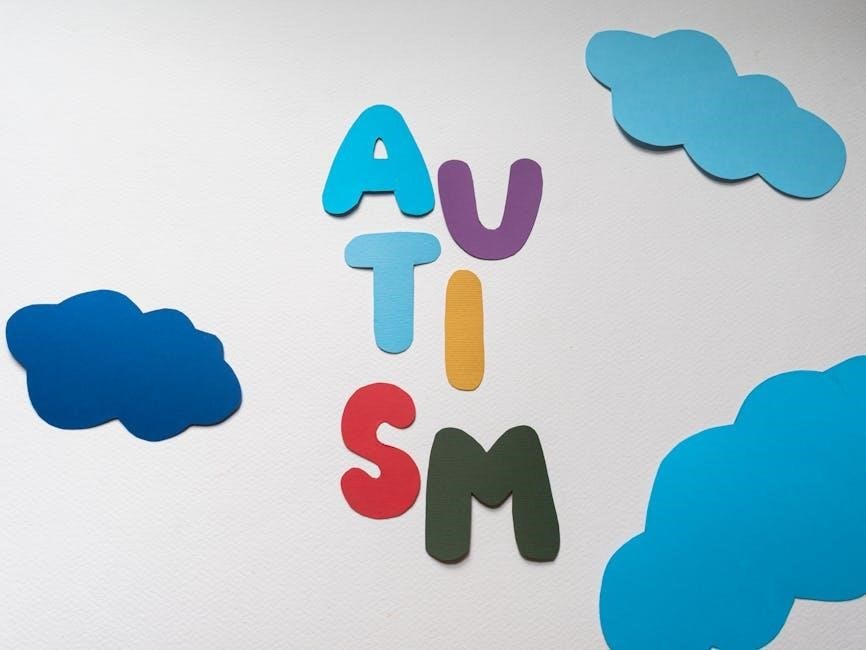Gateways to Art: Understanding the Visual Arts (4th Edition)
Gateways to Art: Understanding the Visual Arts, Fourth Edition, aims to cultivate students’ visual analysis skills. It employs a student-centered approach, emphasizing comparison across time and geography. Digital resources engage students inside and outside the classroom.
Overview of the Textbook
Gateways to Art: Understanding the Visual Arts, in its fourth edition, serves as an introduction to art. Its primary goal is developing students’ abilities to critically analyze visual information, fostering a deeper comprehension of artistic expression. The textbook utilizes a student-focused approach, with a strong emphasis on visual analysis techniques. It encourages cross-referencing and comparisons across different time periods and geographical locations, providing a broader understanding of art history and global artistic traditions. Supplemented by a comprehensive suite of digital resources, the book aims to engage and motivate students, facilitating effective learning both within and beyond the classroom environment.

Authors and Publication Details
Gateways to Art: Understanding the Visual Arts, Fourth Edition, is authored by Debra J. DeWitte, Ralph M. Larmann, and M. Kathryn Shields. Published by Thames & Hudson, it was released on July 1, 2023.
Debra J. DeWitte
Debra J. DeWitte is an Adjunct Professor of Art History at Guilford College, North Carolina. She has extensive experience in art education. As a co-author of Gateways to Art, she contributes to the development of students’ visual analysis skills. Her expertise shapes the book’s student-centered approach. DeWitte’s insights ensure the text fosters comparison across time and geography. Her involvement strengthens the book’s cohesive package of digital resources, motivating students both in and out of class, helping them easily digest chapters and improve comprehension.
Ralph M. Larmann
Ralph M. Larmann brings his expertise to Gateways to Art as a co-author. Larmann’s contribution enhances the book’s focus on visual literacy. He helps shape the student-centered methodology. His insights aid in developing critical thinking through art analysis. Larmann’s work strengthens the cross-references that encourage comparison across time periods and locations. He ensures students can easily comprehend concepts and retain knowledge effectively. The digital resources integrated into the textbook benefit from Larmann’s perspective, fostering engagement and motivation for students inside and outside traditional classroom settings.
M. Kathryn Shields
M. Kathryn Shields co-authors Gateways to Art, contributing to its student-focused approach. Shields’ expertise enriches visual analysis within the textbook. Her input strengthens cross-references for comparison across cultures and eras. She enhances digital resources for student engagement, both in and out of the classroom. Shields ensures the content remains accessible. Her efforts improve comprehension of key concepts. She supports the book’s pedagogical framework. Shields helps students develop strong analytical skills. Her collaboration ensures the textbook effectively motivates students to explore the visual arts, making learning more interactive and impactful.
Publisher: Thames & Hudson
Thames & Hudson publishes Gateways to Art: Understanding the Visual Arts, Fourth Edition. They ensure high-quality content and engaging resources. The publisher supports the book’s student-centered approach. They back the emphasis on visual analysis. Thames & Hudson provides a cohesive package of digital resources. These resources motivate students in and out of class. They ensure accessible and comprehensive material. The publisher promotes cross-references for comparison across time and geography. Thames & Hudson enhances the learning experience. They deliver a product that aids student comprehension. Their backing reinforces the textbook’s pedagogical strength. They strive for excellence in art education resources.
Fourth Edition Release Date: July 1, 2023
The Fourth Edition of Gateways to Art: Understanding the Visual Arts was released on July 1, 2023. This updated edition offers contemporary art coverage. It includes art related to social justice. The release introduces the Norton Illumine Ebook. This ebook illuminates core concepts for students. It features engaging and motivational elements. Students benefit from the updated content and resources. The new edition builds upon the book’s established strengths. It maintains a student-centered approach. It continues to emphasize visual analysis skills. It keeps cross-references to encourage comparison. This release date signifies a commitment to current and relevant art education materials.

Key Features and Pedagogical Approach
Gateways to Art employs a student-centered approach. It emphasizes visual analysis. The textbook uses cross-references for comparisons across time and geography. Digital resources engage and motivate students, enhancing the learning experience significantly.
Student-Centered Approach
Gateways to Art, Fourth Edition, utilizes a student-centered approach, ensuring accessibility and engagement. The textbook is designed to meet students’ needs, fostering an active learning environment. It promotes critical thinking and encourages students to develop their unique perspectives on visual arts. The student-centered approach emphasizes the importance of individual learning styles and provides resources that cater to diverse needs, making art history approachable and relevant. Students can easily digest the content presented in brief chapters, and on-page glossary definitions improve comprehension, ensuring a supportive and enriching learning experience.
Emphasis on Visual Analysis
Gateways to Art, Fourth Edition, places a significant emphasis on visual analysis, enabling students to develop critical skills in interpreting artworks. The textbook provides a framework for understanding the elements and principles of art, fostering a deeper appreciation for artistic expression. Students are encouraged to analyze compositions, techniques, and cultural contexts. Through visual analysis, students learn to articulate their observations and interpretations, strengthening their understanding of art’s significance. This approach empowers students to engage with art in a meaningful way, becoming more discerning viewers and informed art enthusiasts.
Cross-References and Comparisons
Gateways to Art, Fourth Edition, integrates cross-references and comparisons to broaden students’ understanding of art history. By connecting artworks across different periods and cultures, the textbook encourages students to identify common themes and stylistic variations. This comparative approach fosters critical thinking and analytical skills, enabling students to discern the unique qualities of each work. Cross-references also highlight the interconnectedness of art, revealing the influence of past traditions on contemporary practices. Students gain a deeper appreciation for the diversity and evolution of art through these insightful comparisons.
Digital Resources and Supplements
Gateways to Art, Fourth Edition, boasts a suite of digital resources, including an Ebook, InQuizitive, videos, a student site, and a museum journal, designed to enrich the learning experience and engage students more deeply with the material.
Ebook Version
The digital version of Gateways to Art, Fourth Edition, offers students a convenient and portable way to access the textbook’s content. The Ebook can be accessed on various devices, enabling learning anytime, anywhere. The Norton Illumine Ebook shines a light on high-quality content through engaging and motivational features that illuminate core concepts for students in an accessible format. With interactive elements and search functionality, the Ebook enhances comprehension and facilitates efficient study habits, ultimately helping students to grasp key concepts with greater ease.
InQuizitive
InQuizitive is an adaptive learning tool that comes with Gateways to Art: Understanding the Visual Arts, Fourth Edition. This platform is designed to engage students actively, offering personalized quizzing and feedback. As students work through the questions, InQuizitive adapts to their skill level, providing customized learning paths. This helps to reinforce key concepts and identify areas needing further review. This adaptive approach ensures that students receive targeted support, improving their comprehension and retention of the material covered in Gateways to Art.
Videos and Student Site
The Fourth Edition of Gateways to Art: Understanding the Visual Arts provides a range of videos and student site resources. These tools aim to motivate and engage students both in and out of the classroom. The videos likely offer visual explanations and demonstrations of key concepts, while the student site might include interactive exercises, study guides, and additional learning materials. These components support diverse learning styles, helping students to better understand and retain the material.
Museum Journal
The Museum Journal, offered alongside the Fourth Edition of Gateways to Art: Understanding the Visual Arts, serves as a valuable resource for students. It complements the textbook by providing access to a curated collection of art pieces from various museums. This feature allows students to explore artworks beyond those featured in the text, fostering a deeper appreciation for art and its cultural contexts. By engaging with the Museum Journal, students can enhance their visual analysis skills and broaden their understanding of art history.

Content Updates in the Fourth Edition
The Fourth Edition features updated coverage of contemporary art. It highlights art related to social justice, reflecting current events’ influence on art. This ensures students engage with relevant and thought-provoking modern artistic expressions.
Contemporary Art Coverage
The fourth edition expands its focus, incorporating current artistic trends and movements to provide a richer understanding of today’s art world. Students can explore diverse contemporary artworks. They will analyze how artists respond to modern issues, technologies, and cultural shifts. Examples include street art and large-scale murals. The text highlights Eduardo Kobra’s “Etnias,” a 30,000 sq. ft. mural created for the Rio Olympics. These additions aim to keep the content relevant and engaging, offering students a glimpse into the dynamic and evolving landscape of contemporary art. This approach enhances their critical thinking about present-day artistic practices.
Art Related to Social Justice
The Fourth Edition emphasizes art’s role as a powerful medium for addressing social justice issues. It showcases artworks that tackle topics such as equality, human rights, and cultural identity. These additions illustrate how artists engage with current events. Students will explore how art can raise awareness, inspire dialogue, and promote social change. By analyzing such pieces, students develop critical thinking skills. They will also learn to appreciate art’s capacity to reflect and shape societal values. This focus highlights the influence of current events on art and encourages students to explore art’s impact on contemporary social issues.

Availability and Formats
The textbook is available in both print and digital formats. The digital version includes an ebook, videos, and a student site. Access codes are required for some digital resources.
Print and Digital Options
Gateways to Art: Understanding the Visual Arts, 4th Edition, is accessible in both traditional print and digital formats to cater to diverse student learning preferences. The print version offers a tangible learning experience, while the digital version provides enhanced features like interactive elements and multimedia resources. Students can choose the format that best suits their learning style and study habits. The digital option is delivered via the Norton Illumine Ebook, which highlights core concepts through engaging features. This allows flexible access and enhanced engagement with the material, promoting a deeper understanding of visual arts.
Access Codes
To unlock the full suite of digital resources accompanying Gateways to Art: Understanding the Visual Arts, 4th Edition, students require valid access codes. These codes provide entry to InQuizitive, the video library, the student website, and the museum journal. Access codes may be included with new print copies of the textbook or purchased separately. Students should ensure they obtain a legitimate access code from an authorized retailer to prevent issues during registration. These resources enhance the learning experience. Access codes are essential for students. They will need it to fully engage with the material.
